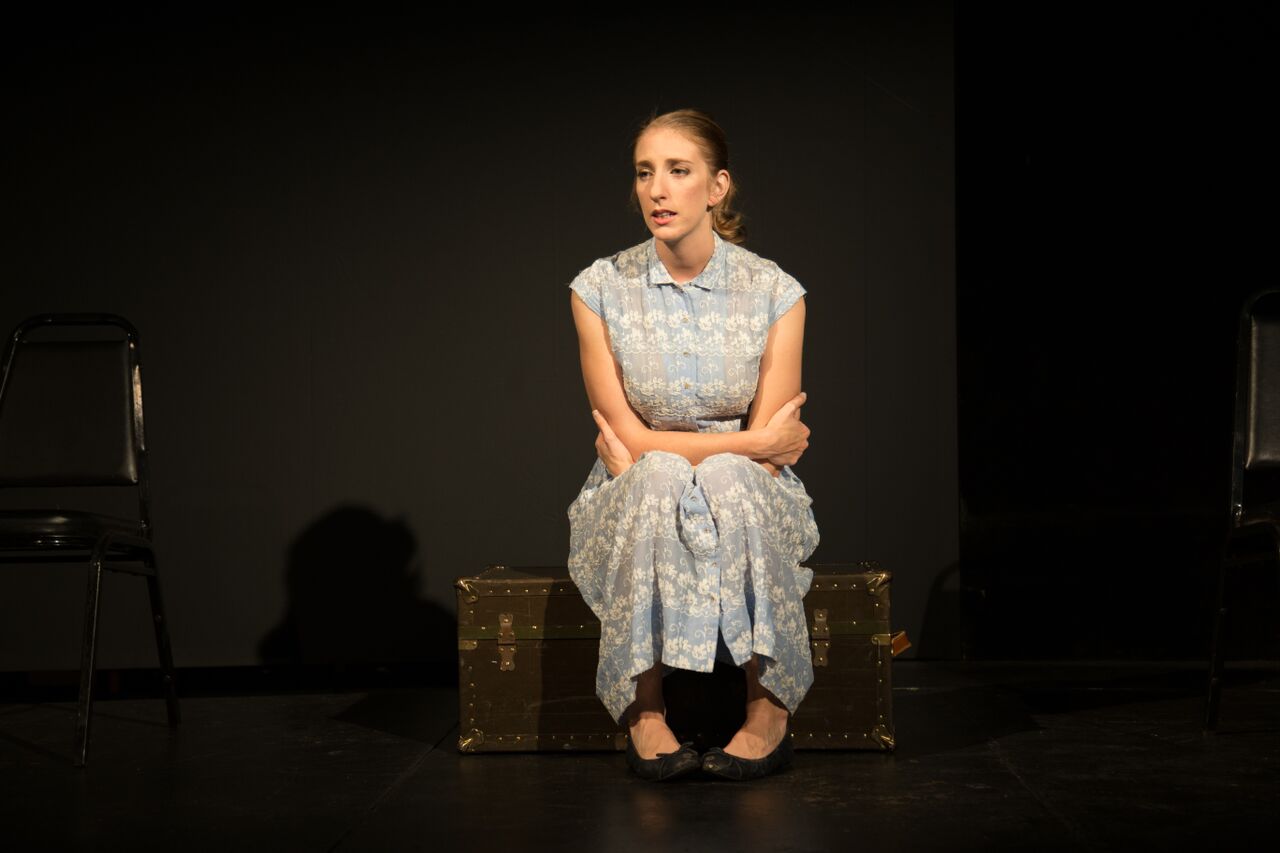There are lots of shows on at the Fringe dealing with the legacy of Nazi Germany over seventy years later, from Dr Korczak’s Example to Mengele. What makes Eleanor’s Story: An American Girl in Hitler’s Germany unique is that it is not only based on the fascinating true story of Eleanor Ramrath Garner, but it is also written and performed by her granddaughter, Ingrid Garner. Performing alone, Garner takes on numerous personas from that of her grandmother to Eleanor’s parents, brother and various other characters. Through a good use of accent and body gesture, it is never ambiguous which persona Garner is occupying, and she effortlessly conveys the excitement, naivety and confusion of a young girl.
Beginning in 1939, Ingrid – or rather, Eleanor – tells how she and her part-American, part-German family moved to Nazi Germany at the worst possible time; the outbreak of World War Two. Finding themselves trapped in Berlin and unable to return to the USA, the family are forced to make the best of things, undergoing incredible hardships over the course of the war. Young Eleanor tries to integrate; she and her brother join the Hitler Youth for instance, and always make the Hitler salute when they enter somewhere. Provocatively, Garner makes the Hitler salute multiple times in a row onstage but, performed with the innocence of a child, it detracts from any offensive connotations.
Excellent use is made of a screen, which displays images such as Eleanor’s idyllic childhood home in Stratford, New Jersey, and her new home in Steglitz, Berlin. Sound effects are employed to make you believe that you are also cowering in an air raid bunker, sirens screeching and planes flying overhead. The play manages to be moving without crossing the line into melodrama, and over the course of just one hour Ingrid makes you care deeply about this family and their fate.
Criticism could be raised over the play’s sparse references to the Holocaust, but ultimately that is not part of Eleanor’s tale, so it makes sense that the Nazi persecution of Jews is not the focus. Instead, Eleanor’s Story reveals a unique perspective on World War Two and Nazi Germany; that of a borderline girl, both American and German, both girl and woman. It also touches on the horrors of the Soviet invasion of Berlin, pointing to the fact that evil, far from being a German speciality, is a universal phenomenon. Indeed, it is touching that the play avoids vilifying German language and culture, as some narrative depictions of Nazi Germany tend to do. Instead, the beautiful 19th century Abendsegen (Evening Prayer) serves as a source of hope to young Eleanor, as she imagines fourteen angels looking over and protecting her.
Everyone interested in this period of history – and even those who are not – should see Eleanor’s Story. It is a fascinating, unique perspective on a dark period of history, and it is performed tremendously.
Eleanor’s Story: An American Girl in Hitler’s Germany
Gilded Balloon Teviot (Venue 14)
4-27 August
Image: Austin Bauman

